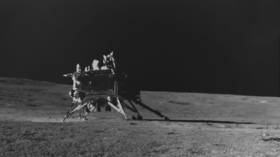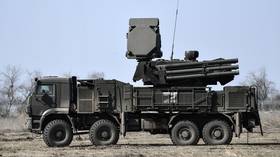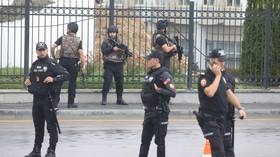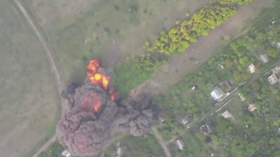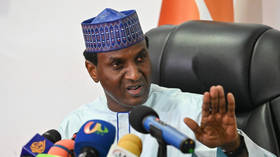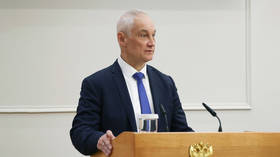New Delhi to send first Indian to Moon by 2040
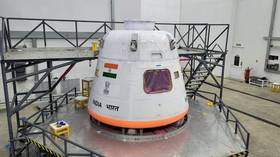
India should build on the success of its space initiatives by aiming for “new and ambitious goals,” including setting up a space station by 2035 and sending the first Indian to the Moon by 2040, the country’s prime minister Narendra Modi told officials on Tuesday at a high-level meeting.
To realize the premier’s vision, the Department of Space will develop a roadmap for Moon exploration, which will “encompass a series of Chandrayaan missions, the development of a Next Generation Launch Vehicle (NGLV), construction of a new launch pad, setting up human-centric laboratories and associated technologies,” prime minister's office said in a statement.
Modi set ambitious new targets while chairing a high-level meeting to assess the progress of India’s first human spacelift mission ‘Gaganyaan,’ which is expected to take off in 2025. The mission has been delayed multiple times, first due to the Covid-19 pandemic and then over safety concerns. Likewise, the deadline for India’s own space station has also been postponed – it was earlier expected to be completed by 2030.
The Gaganyaan mission aims to demonstrate the human spaceflight capability by launching a human crew to an orbit of 400 kilometers and bringing them back safely to Earth in Indian sea waters. India’s Department of Space on Tuesday presented to Modi a comprehensive overview of the mission, including “various technologies developed for the mission, such as human-rated launch vehicles and system qualification.”
According to the government, the space agency is planning 20 major tests ahead of the mission, including three uncrewed missions of the Human Rated Launch Vehicle (HLVM3). The maiden Test Vehicle Abort mission-1 (TV-D1) test is scheduled for October 21.
The Indian Space Research Organisation said the test vehicle is a single-stage liquid rocket carrying several major payloads, including the Crew Module (CM)and Crew Escape Systems (CES). During the first test flight, these modules will be separated from the test vehicle at an altitude of about 17 kilometers.
“Subsequently, the abort sequence will be executed autonomously commencing with the separation of CES and deployment of the series of parachutes, finally culminating in the safe touchdown of CM in the sea, about ten kilometers from the coast of Sriharikotam,” the agency said.
In June 2019, India signed a memorandum of understanding with Glavkosmos, a subsidiary of Russian State Space Corporation Roscosmos, for the training of four astronauts who were shortlisted for the Gaganyaan mission. The training was conducted at the Yuri Gagarin Cosmonaut Training Center at Star City, about 30 kilometers north of Moscow, from February 2020 to March 2021.
Earlier this year, Indian media reported that the US has also offered to train the astronauts selected for the first manned space mission of India.
Meanwhile, the head of Russia’s space agency has recently proposed to create a dedicated specialized module for BRICS countries at the Russian Orbital Station (ROS), which is expected to be launched in 2027. This could enable BRICS countries to carry out their respective national space programs using the station’s near-Earth orbit.
India, for its part, called for the establishment of a multinational space-exploration consortium. “We are already working on the BRICS satellite constellation. Taking it a step further, we can consider creating a BRICS space-exploration consortium. Under this, we can work for global good in areas like space research [and] weather monitoring,” Modi said at the BRICS summit in Johannesburg.
The BRICS countries last year established a joint committee on space-cooperation to enable the five countries’ remote sensing satellite constellation to share data. That initiative was initially promoted by China in 2015.
